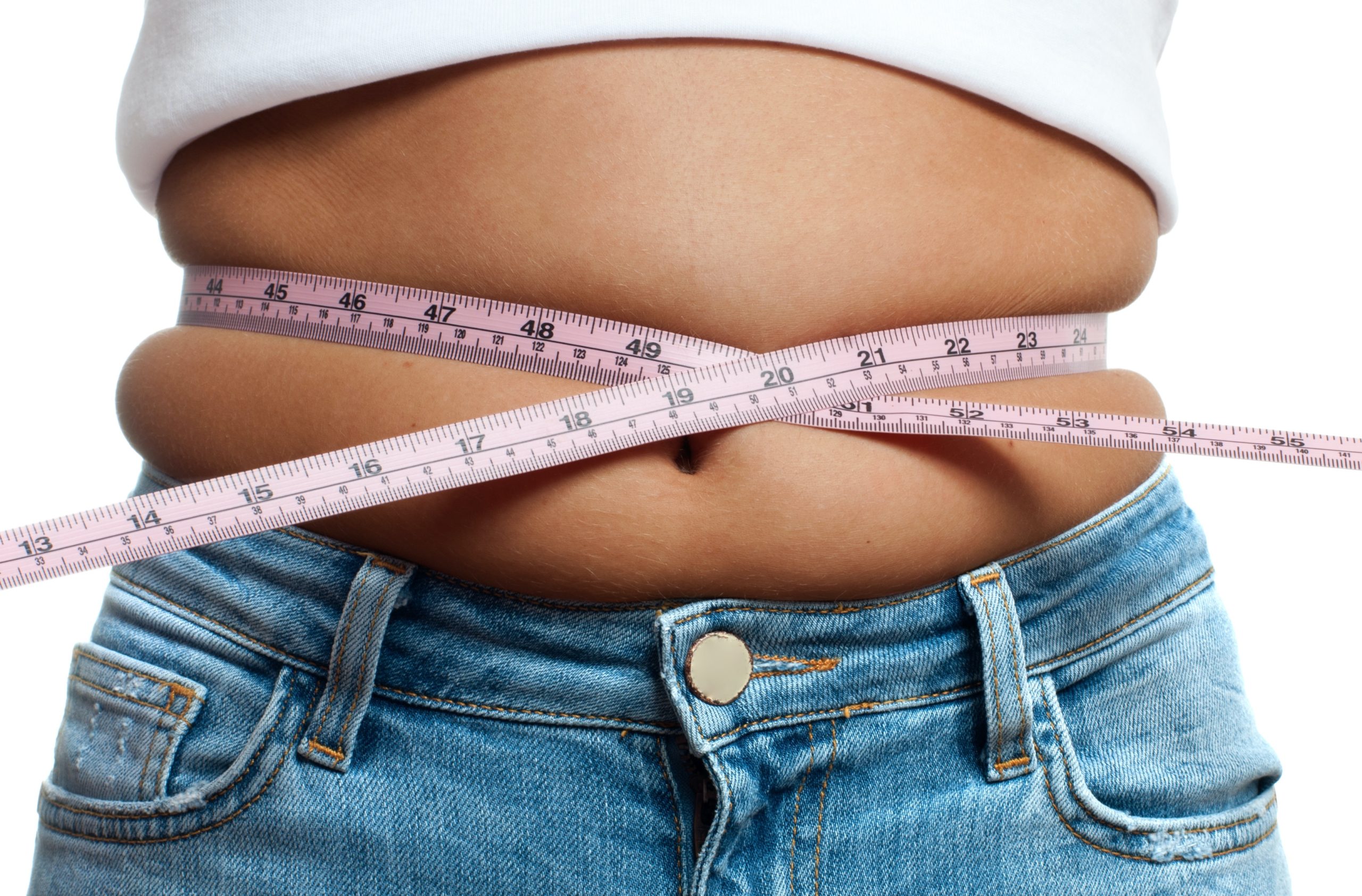What is belly fat?
Are you sick of the tire swing or pool float around your midsection?! Well, I hear ya! This is a frequent, reported issue among many middle-agers as metabolism starts to slow, and activity decreases due to work and family obligations. Unfortunately, sitting at a computer for hours on end has become the new smoking epidemic. Yes, inactivity can be as harmful as smoking several cigarettes a day.
From an anatomy side of things, the stomach muscle covers the entire midsection of the body and connects to the pelvis. If you have a pad of excess fat covering the muscle, it is known as belly or visceral fat. Visceral fat, or belly fat, extends deep into your abdomen and surrounds your internal organs, such as the heart, stomach, and liver.
Visceral fat is different to the subcutaneous fat which lies just under the skin and it is far more dangerous. It is made up large fat cells which can grow bigger with time, and firmly pack into the spaces between the organs, having a negative effect on how they function. This can have a serious effect on your health and be a factor for insulin resistance. An insulin resistant dynamic means that your body’s muscle and liver cells don’t react sufficiently to normal levels of insulin, the pancreatic hormone that transports glucose into the cell. Glucose levels in the blood start to trend upwards, heightening the risk for diabetes.
It is not only overweight people that have belly fat. Skinny people can be of normal weight on the Body Mass Index, but still have an excess of visceral fat that earns them the award for “skinny fat.” The bottom line is that we all need some belly fat to cushion our organs in case of a bump or fall. However, an excess can be extremely detrimental to our health. It pays to be aware of this dynamic and take action before we start outgrowing our pants and our waistlines become alarmingly expanded.
What causes belly fat?
There are many causes of belly fat, most of them directly related to diet and lifestyle. Here are some of the dietary reasons for the increase in belly fat:
- Excessive intake of sugary and refined foods such as cakes, candies, sweets, rolls, and cookies.
- Nutrient-poor processed foods and carbohydrates which are not able to be processed by the liver but end up as storage fat in your fat cells.
- Heavy alcohol consumption
- Your job
- Poor sleep and sleep deprivation
- Inactivity and a sedentary lifestyle play a huge part in obesity, including the dangerous belly fat. Over exercising can also cause issues with the hormones so something to keep in mind if you are an avid exerciser.
- Hormones…yup…your hormones can be making you fat.
- Environmental toxins such as pesticides, cosmetic additives, food additives, and electromagnetic radiation can wreck havoc on your hormones and can perpetuate the never ending cycle of the body being unable to rid itself of the toxins.
Embracing a healthy eating plan can help prevent belly fat from developing, with a focus on fat burning foods like nuts, eggs, lean meat, peppers, leafy greens, legumes, and whole grains.
How hormones are linked to belly fat
Extra belly fat can indicate an imbalance in the following hormones:
- Cortisol
Cortisol is a hormone which is essential to survival. It is produced in the adrenal glands and dictates how energy is used, controls our blood pressure, and promotes the metabolism of carbohydrates and fats. It also helps the body mount a response in stressful situations. Ongoing stress results in an over-production of cortisol, which leads to cravings for sugary, fatty comfort foods as immediate fuel sources. This extra food is stored as fat, especially around the abdomen.
- Estrogen
Too much estrogen is a major cause of belly fat, and studies have shown that affects both men and women. Excess abdominal fat in men increases the conversion of testosterone to estrogen, and as the estrogen levels rise, the belly fat increases.
This gives rise to a vicious circle as testosterone levels drop lower than normal, leading to increased stress, increased cortisol production, more cravings, and more belly fat. I recently posted this blog post on how to know if your hormones are out of whack.
The dangers of belly fat
Researchers at the American Diabetes Association revealed that visceral fat produces toxins, among which are chemicals called cytokines, which increase your risk of heart disease. The cytokines also make the system less sensitive to insulin, which could lead to the development of diabetes.
Studies at the Massachusetts General Hospital reported that visceral, or belly fat, is one of five components of a metabolic syndrome which increases the risk of many dis-ease states. Metabolic syndrome is a cluster of conditions or dis-ease states that occur together including: increased blood pressure, high blood sugar, excess body fat around the waist, and abnormal cholesterol or triglyceride levels. This is something to pay attention to here as it has been projected that over one third of Americans have a metabolic syndrome dynamic. Metabolic syndrome has a correlation with:
- Stroke and heart disease.
- Brain problems such as depression and dementia.
- High blood pressure and possible hardening of the arteries.
- Promotes the development of triglycerides and LDL (bad) cholesterol in the blood.
- Leads to poor blood sugar control or insulin resistance which can lead to diabetes.
- Causes inflammation in the body which increases the chances of falling prey to diseases.
- The inflammation may also aggravate arthritis, and lead to other bone problems.
Some ways to help combat belly fat
- Get your stress levels down as low as possible. Stress may lead to a spike in blood sugar, which promotes insulin resistance. Check out my recent post on how to break up with stress and anxiety for good.
- Get more exercise. Exercise is crucial to help combat belly fat, so commit to regular exercise to reduce the size of your potbelly. Any sort of exercise will help, and some studies have shown exercise to be more beneficial than nutrition.
- Cut out refined, acidic foods. The extra acid in your system which cannot be metabolized will be deposited in your fat cells.
- Cut down on eating saturated fats which are found in fatty red meats, bacon sausages, processed meats, and cheeses. Opt for lean cuts of meat, skinless chicken, and fish such as salmon, trout, tuna, and hake which are rich in omega 3s.
- Eat some good fats, because research has shown that not all fats are bad, and by adding some good fats to your diet, helps the body burn bad fat. Some foods containing healthy fats include avocado, olives, walnuts, and fatty fish.
- Drink less alcohol which is high in calories and sugar, and leads to fat gain, often shows up in the middle and waist area.
Banishing belly fat will be good for many things
Excessive, unsightly belly fat may also have a detrimental effect on your self-confidence, and as well as your self-esteem. Looking good again can help rebuild positive feelings about yourself. But the most important benefit will be the restoration of good health and a major improvement in your general feeling of well-being.
Nip the belly fat in the bud by dealing with stress to prevent the over-production of the stress hormone, cortisol, which is the major culprit in the development of belly fat. Fill up on the rainbow of fruits and vegetables and choose some sort of fun, sweaty activity that you enjoy! Focus on decreasing your stress levels through mindfulness and meditation and make your self-care the #1 priority.


















